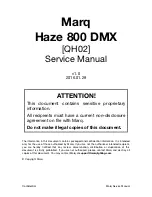
Transmittable Documents
49
4. Sending
Fa
x
e
s
4. Sending Faxes
Transmittable Documents
Loading the Document
♦
Documents which are taped, torn,
smaller than the minimum size,
carbon backed, easily smudged, or
have a slick, coated surface should be
photocopied, and the copy loaded in
the feeder.
♦
Documents that are curled or have a
wave-like pattern must be flattened.
Minimum document size/weight
Loading up to 20 sheets at once:
5.8” x 5.5” (148 x 140 mm)
14 lbs. (52 g/m
2
)
Loading 1 sheet at a time:
2.8” x 5.5” (70 x 140 mm)
14 lbs. (52 g/m
2
)
Maximum document size/weight
Loading up to 20 sheets at once:
Letter (8.5” x 11”, 216 x 279 mm)
20 lbs. (75 g/m
2
)
Loading up to 5 sheets at once:
Legal (8.5” x 14”, 216 x 356 mm)
20 lbs. (75 g/m
2
)
Loading 1 sheet at a time:
Legal (8.5” x 14”, 216 x 356 mm)
42 lbs. (157 g/m
2
)
The maximum scanning width is 8.2”
(208 mm), and the top and bottom
0.16” (4 mm) of a document cannot
be scanned.
Up to 20 letter-size sheets (5 legal-size
sheets) can be placed in the feeder at
once. (If the sheets do not feed or
double feeds occur, reduce the number
of sheets.) The sheets will feed
automatically starting from the bottom
sheet.
♦
To send or copy more than the
maximum number of sheets, place
the additional sheets gently in the
feeder just before the last sheet is
scanned. Do not force the sheets in,
as this may cause double-feeding or
jamming.
♦
For large or thick sheets that must be
loaded one at a time, insert each
sheet into the feeder as the previous
sheet is being scanned. Insert gently
to avoid double-feeding.
1
Flip up the feeder cover (
➊
) and
adjust the document guides to the
width of your document (
➋
).
Other restrictions
♦
The scanner cannot recognize yellow,
greenish yellow, or light blue ink.
♦
Remove all clips, staples, and pins
before loading documents in the
feeder (these will damage the
machine).
♦
Ink, glue, or correcting fluid on a
document must be dry before
scanning.
1
2
















































